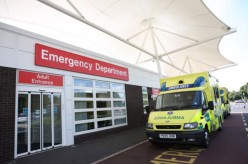 The Association of Ambulance Chief Executives has welcomed statistics from the Health and Social Care Information Centre (HSCIC) that show every single ambulance trust in England has met the national standard for responding to emergency calls in eight minutes – for the first time since the introduction of ‘Call-Connect’ in April 2008.
The Association of Ambulance Chief Executives has welcomed statistics from the Health and Social Care Information Centre (HSCIC) that show every single ambulance trust in England has met the national standard for responding to emergency calls in eight minutes – for the first time since the introduction of ‘Call-Connect’ in April 2008.
All 12 trusts achieved the standard in 2011-12 by ensuring at least 75 per cent of serious (Category A) calls were responded to in the allotted time – from the call being received at the control room to an emergency response vehicle arriving at the scene.
The national average is now at 76.2 per cent, compared to 74.9 per cent in 2010-11 and 74.3 per cent in 2008-09, according to the report, Ambulance Services, England; 2011-12 released on 20 June 2012 by the HSCIC (previously known as the NHS Information Centre).
Peter Bradley, National Ambulance Director at the Department of Health, Chief Executive of London Ambulance Service and Chair of the AACE, welcomed the new figures:
“This data shows how hard the whole ambulance service has worked since April 2008 to ensure it is a highly efficient and effective part of the NHS. Against a backdrop of rising demand for our services and ever-increasing call rates, ambulance trusts have proved they can prioritise their workloads and deliver excellent care for patients, which is even more remarkable considering the tough financial climate we are all facing.”
Ten of the 12 trusts met the other national standard: that for at least 95 per cent of Category A responses, a fully equipped ambulance vehicle capable of transporting the patient should arrive at the scene within 19 minutes. The national average is now 96.8 per cent, compared to 96.7 per cent in the previous year, when 11 of the 12 services met the standard.
The report also shows that in 2011-12:
- Control rooms received 8.5 million emergency calls; a 5.1 per cent (415,500) increase on the previous year and a 13.6 per cent (over 1 million) increase on 2008-09.
- Of these, about four in every five calls (6.7 million) resulted in an emergency response vehicle arriving at the scene of the incident, a 1.6 per cent (104,100) increase on the previous year and a 9.1 per cent (560,100) increase on 2008-09.
- 1.8 million patients were treated at the scene and did not need onward transportation; a 2.6 per cent increase (46,500) on the previous year and a 13.2 per cent (210,700) increase on 2009-10; the first year for which this information is available.
- The proportion of calls that resulted in a response vehicle arriving at the scene of the incident varied by trust area; ranging from 64.9 per cent in London to 88.6 per cent in the South Western trust area. The number of calls and emergency incident responses will not match as multiple calls can be recorded for the same incident, while category C calls only can also be resolved over the telephone.























